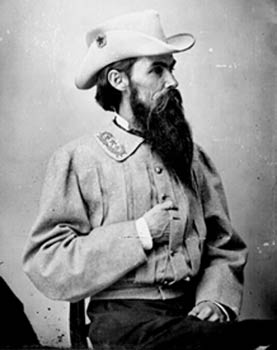
A Brief History Of The Petersburg Grays, the 12th Virginia Infantry, and Mahone’s Brigade
In the grand tradition of a citizen’s militia, the Petersburg Grays were organized in 1828, in Petersburg Virginia. They served in the Mexican War under Captain Fletcher Archer, and continued after the war as an active, drilling unit. Organized at the time in the Virginia State Militia as the 39th Regiment, they were quickly inducted into the Virginia Militia, 4th Battalion, in early 1860. In May of that year, they were reformed into Company B of the 12th Virginia Regiment, Infantry. In October, this Regiment became part of Mahone’s Brigade. This is a small part of their story.
Virginia has reason to be proud of Mahone’s Brigade, with its five regiments of Virginia soldiers marked by so many deeds of noble heroism. Sixteen companies, one-third of the fifty, came from Norfolk County, including the two cities, while Princess Anne, Nansemond, Southampton, Isle of Wright, Sussex, Greenville, Chesterfield, Franklin, and Petersburg furnished the rest. One company from Richmond, the Richmond Grays, was in the 12th Regiment.

General William Mahone
In 1861 the 6th, 12th, 16th and 41st Virginia Infantry Regiments were organized into a brigade at Norfolk, Virginia. On the 16th of November, 1861, Colonel William Mahone of the 6th Virginia was promoted to Brigadier General commanding the brigade. In November, 1862 the 61st Virginia was added to the brigade.
To list the battles in which the brigade participated would be a virtual recital of the history of the Army of Northern Virginia. The brigade was called to defend its colors in the taking of the Gosport Shipyard, the defense of Currituck Bridge, Great Bridge, Craney Island, and Norfolk in the first year of the war. When called upon, the brigade provided gunners who served the guns of the CSS Virginia in its historic battle with USS Monitor. It served with distinction during the battles of Seven Pines and was bloodied at Malvern Hill on the Peninsula. The magnificent charge of Mahone’s Brigade upon the Union forces under General Pope at Second Manassas on August 30, 1962, contributed towards General Lee’s brilliant victory there.

Flag of the State of Virginia from 1861 to 1950
On the invasion of Maryland, as part of Anderson’s Division in General “Stonewall” Jackson’s Corps, Mahone’s Brigade was assigned the duty of holding Crampton’s Gap, to keep the enemy in check while Jackson took Harper’s Ferry. On the 11th of September, Franklin’s Corps of 17,000 men attacked Mahone’s Brigade of four regiments, numbering 600 men, and was held in check for four hours. The brigade did noble work there and paid a heavy penalty for it in the loss of one-half of its numbers, but its gallant stand gave Jackson time to capture Harper’s Ferry. At Sharpsburg the remnants of the brigade made a brave stand and assisted in repelling the last enemy attack upon the Confederates in the Sunken Road at Hagerstown Road.
The brigade served at Fredericksburg. It was the initial unit to check General Joseph Hooker’s forces in their advance of Chancellorsville, and it held the left flank to turn back General Sedgwick’s Corps at Salem Church.
The brigade saw action at Gettysburg, Bristoe Station, and Mine Run. In 1864, it made a brilliant charge which helped to turn Grant’s front in the Wilderness. It was at Shady Grove, Spotsylvania Court House, North Anna River, Hanover Court House, Cold Harbor, Turkey Ridge, and Second Frazier’s Farm.

John Elder’s famous painting of the 12th Virginia
leading the charge into “The Crater”
During the siege of Petersburg at the battle of the Crater on July 30, 1864, Mahone’s brigade saw its finest hour when its regiments massed and charged into the breech forcing the enemy to retreat in rout and capturing over a thousand prisoners. After the Crater, Mahone’s Brigade became the “shock troops” of Lee’s dwindled army. It fought at Reams Station, Burgess’s Mill, and Hatcher’s Run, and when the army retreated from Petersburg, Mahone’s Brigade preserved its organization and courage to the last. At Cumberland Church, only two days before the surrender at Appomattox, Mahone’s men and General Anderson’s Brigade of Georgians captured an entire brigade of Federal troops with their officers and colors. On the 10th of April, 1865, Mahone’s brigade was still a fighting unit, the elite “shock troops” waiting the calling of its beloved Commander in Chief, General Robert E. Lee, and so, on April 10th, 1865, the five regiments of Mahone’s Brigade laid down their arms and furled their colors with honor.
A tune entitled The Grays Quick Step was composed in 1850 by William A. Marks, and dedicated to the captain of the Petersburg Grays, Joseph V. Scott.
Home |
History |
Company B | Company C | Recruiter's Desk |
Civilians |
Links |
Contact
© 2019 12th Virginia All Rights Reserved